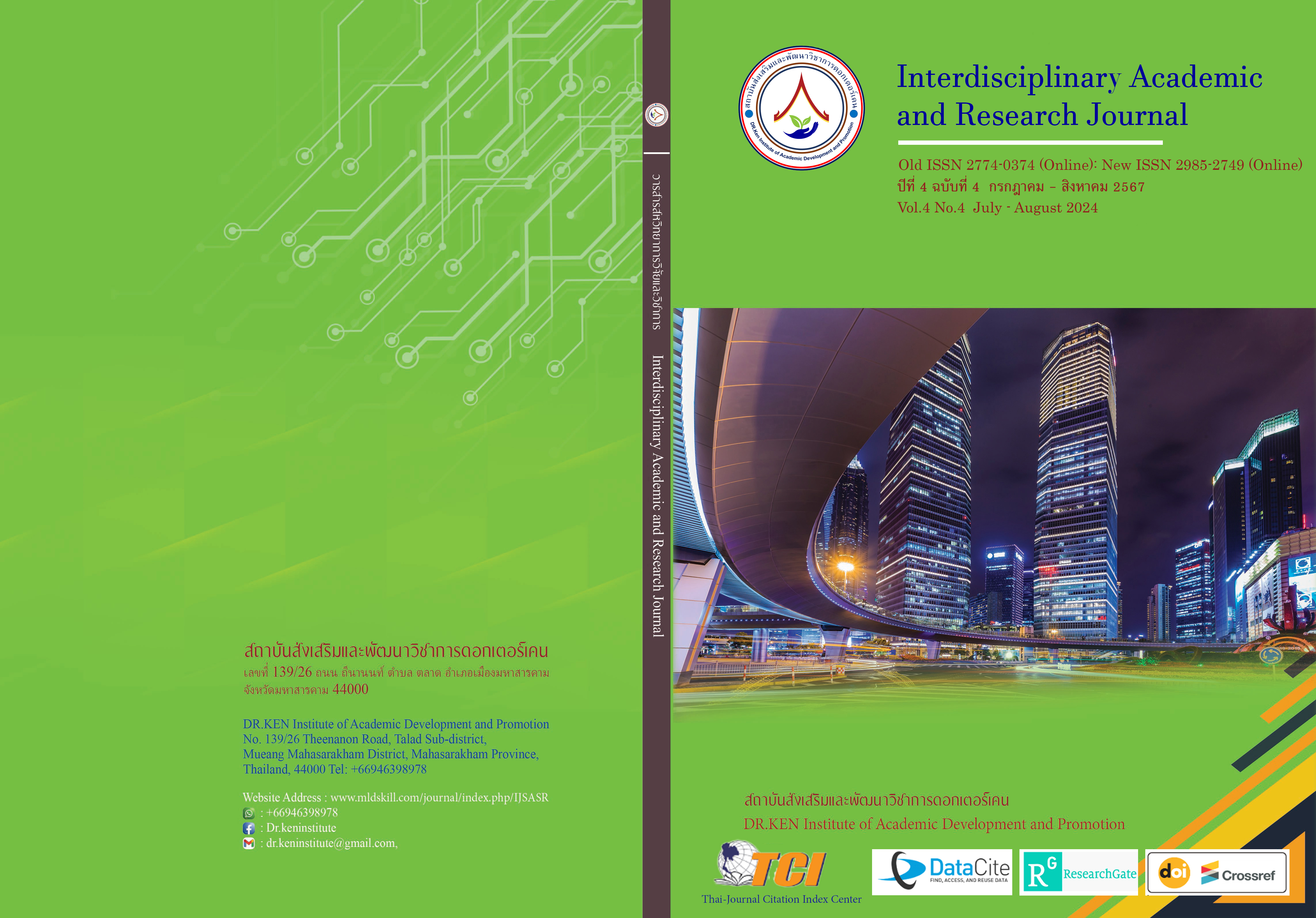The Effects of Learning Activity Management by Using Six Thinking Hats Technique on Analytical Thinking Skills of Prathom Suksa 6 Students
DOI:
https://doi.org/10.60027/iarj.2024.276985Keywords:
Learning Activities Management;, Six Thinking Hats; , Analytical thinking skillAbstract
Background and Aims: Learning Activity Management by using the Six Thinking Hats Technique is a way to train your thinking comprehensively, ready to think in various ways in different situations, following the concept of each color hat. There are 6 colors as follows: white, red, black, yellow, green, and blue, and 6 steps as follows: 1) Lead-in; 2) Explanation 3) Demonstration 4) Practice 5) Elaboration 6) Conclusion. Thus, this research aimed to objectives: To study the results of The Effects of Learning Activity Management by using the Six Thinking Hats Technique on the Analytical Thinking Skills of Prathom Suksa 6 Students Post-test scores were higher than pre-test.
Methodology: The sample group included Prathom Suksa 6 students at Daeng Pao (Singsuk Burana) School, Lat Krabang District, Bangkok, during the second semester of the academic year 2023. A total of 22 people were selected by a specific method. The research instruments used for this study were three learning plans for six hours and an analytical thinking ability test consisting of 20 items. Statistical values of data analysis include as follows: mean, standard deviation, and t-test statistics.
Results: The Effects of Learning Activity Management by Using the Six Thinking Hats Technique on Analytical Thinking Skills of Prathom Suksa 6 Students The average score pre-test was 18.18, with a standard deviation (SD) of 2.91, and the average score post-test was 21.95, with a standard deviation (SD) of 3.47.
Conclusion: The Effects of Learning Activity Management by Using Six Thinking Hats Technique on Analytical Thinking Skills of Prathom Suksa 6 students' post-test scores were higher than the pre-test statistically significant at the 0.05
References
กชณิภา มาสิม. (2558). ผลการจัดกิจกรรมการเรียนรู้กลุ่มสาระการเรียนรู้ภาษาไทยโดยใช้เทคนิคการคิดแบบหมวก 6 ใบ เพื่อพัฒนาการคิดวิเคราะห์และคิดสังเคราะห์ของนักเรียนชั้นประถมศึกษาปีที่ 6. วิทยานิพนธ์ศึกษาศาสตรมหาบัณฑิต มหาวิทยาลัยราชภัฏเชียงราย.
กรมวิชาการ, กระทรวงศึกษาธิการ. (2545). หลักสูตรการศึกษาขั้นพื้นฐาน พุทธศักราช 2545. กรุงเทพมหานคร: องค์การรับสงสินค้าและพัสดุภัณฑ์ (ร.ส.พ.), 2545.
เกรียงศักดิ์ เจริญวงศ์ศักดิ์. (2546). การคิดเชิงวิเคราะห์. พิมพ์ครั้งที่ 1. กรุงเทพฯ: โรงพิมพ์ซัคเซศมีเดีย.
ชัยวัฒน์ สุทธิรัตน์. (2557). เทคนิคการใช้คำถาม พัฒนาการคิด. พิมพ์ครั้งที่ 4. กรุงเทพฯ: โรงพิมพ์วีพรินท์ (1991) จำกัด.
พระราชบัญญัติการศึกษาภาคบังคับ พ.ศ. 2545. (2545, 31 ธันวาคม). ราชกิจจานุเบกษา เล่ม 119 (ตอนที่ 128 ก), หน้า 11-14.
ละเอียด ทองสุทธิ. (2552). การเปรียบเทียบความสามารถการคิดวิเคราะห์วิชาภาษาไทย ของนักศึกษาชั้นประถมศึกษาปีที่ 6 ที่มีความสามารถทางการเรียนรู้ต่างกัน ระหว่างการจัดการเรียนรู้โดยใช้เทคนิคการคิดแบบหมวกหกใบกับแผนผังความคิด. วิทยานิพนธ์ศึกษาศาสตรมหาบัณฑิต มหาวิทยาลัยราชภัฏเลย.
วัชรา เล่าเรียนดี. (2547). เทคนิควิธีการจัดการเรียนรู้สำหรับครูมืออาชีพ. นครปฐม: โรงพิมพ์ มหาวิทยาลัย ศิลปากร.
สุคนธ์ สินธพานนท์ และคนอื่น ๆ (2552). พัฒนาทักษะการคิด พิชิตการสอน. พิมพ์ครั้งที่ 4. กรุงเทพฯ: โรงพิมพ์เลี่ยงเชียง.
โอภาส ขำมะลัง (2562). การศึกษาผลสัมฤทธิ์ทางการเรียน หน่วยการเรียนรู้วรรณกรรมพิจารณ์และการคิดวิเคราะห์ ของนักเรียน ชั้นมัธยมศึกษาปีที่ 6 จากการจัดการเรียนรู้ด้วยเทคนิคการคิดแบบหมวกหกใบวิทยานิพนธ์ครุศาสตรมหาบัณฑิต มหาวิทยาลัยราชภัฏนครราชสีมา.
Bloom, B.S. (1956) Taxonomy of Educational Objectives, Handbook: The Cognitive Domain. David McKay, New York.
Kuder, G.F., Richadson, M.W.. (1937). The theory of the estimation of test reliability. Psychometrika,2 151-160.
Downloads
Published
How to Cite
Issue
Section
License
Copyright (c) 2024 Interdisciplinary Academic and Research Journal

This work is licensed under a Creative Commons Attribution-NonCommercial-NoDerivatives 4.0 International License.
Copyright on any article in the Interdisciplinary Academic and Research Journal is retained by the author(s) under the under the Creative Commons Attribution-NonCommercial-NoDerivatives 4.0 International License. Permission to use text, content, images, etc. of publication. Any user to read, download, copy, distribute, print, search, or link to the full texts of articles, crawl them for indexing, pass them as data to software, or use them for any other lawful purpose. But do not use it for commercial use or with the intent to benefit any business.
















.png)


